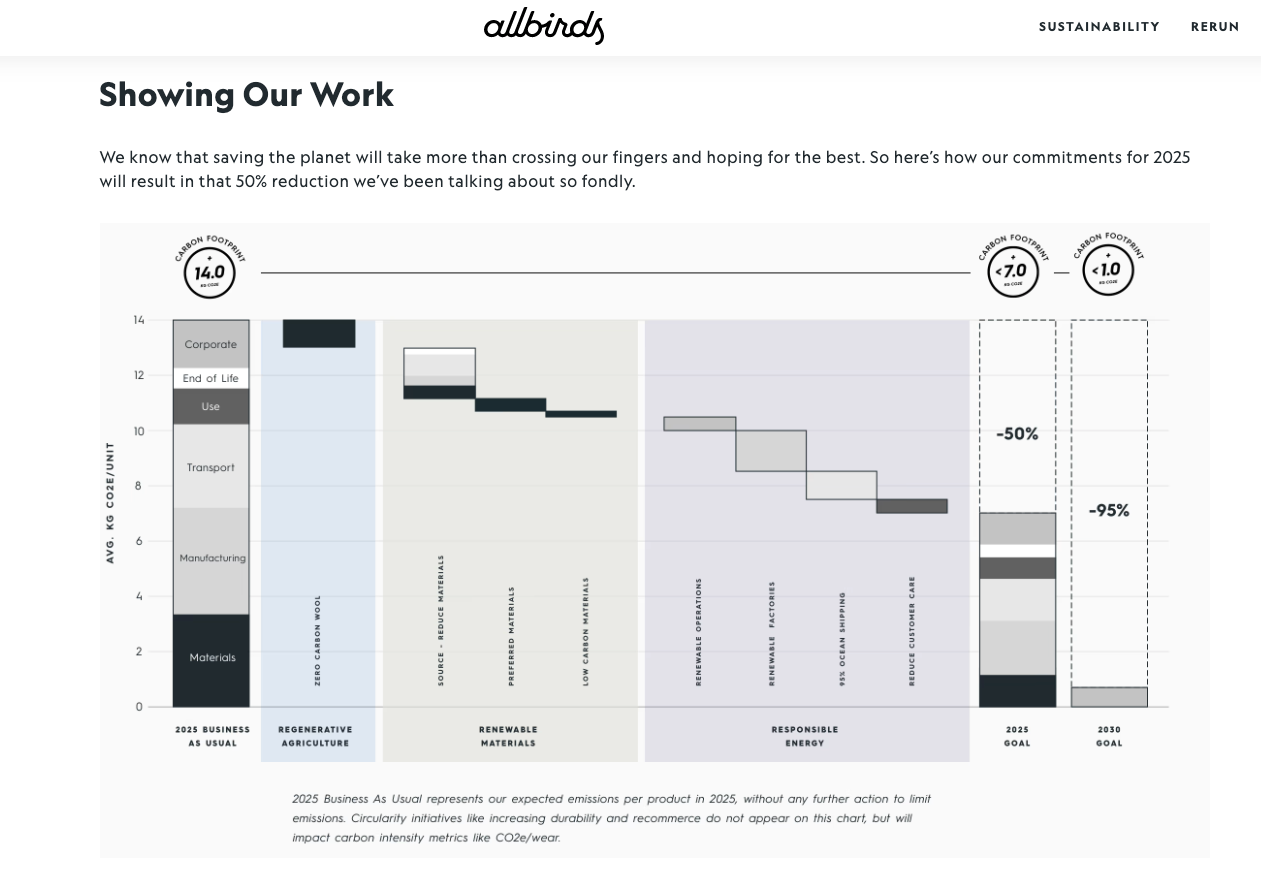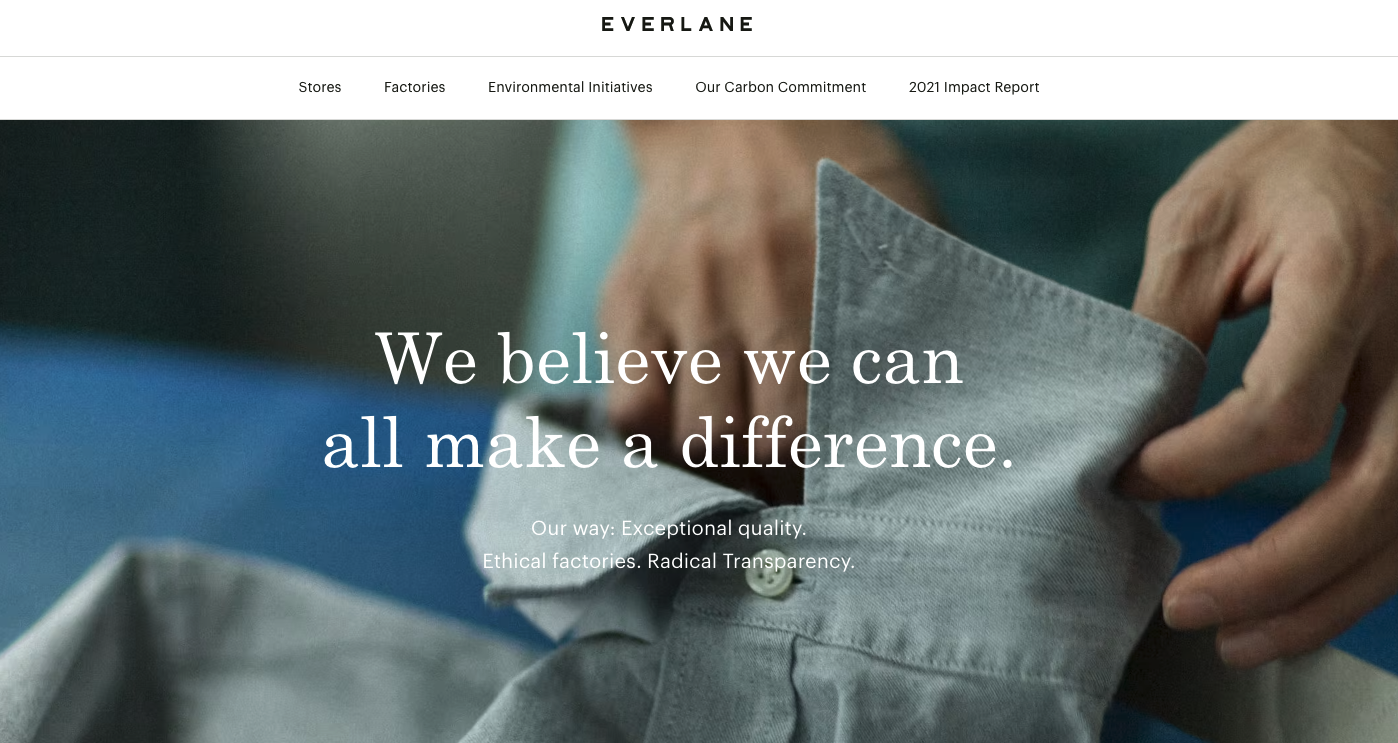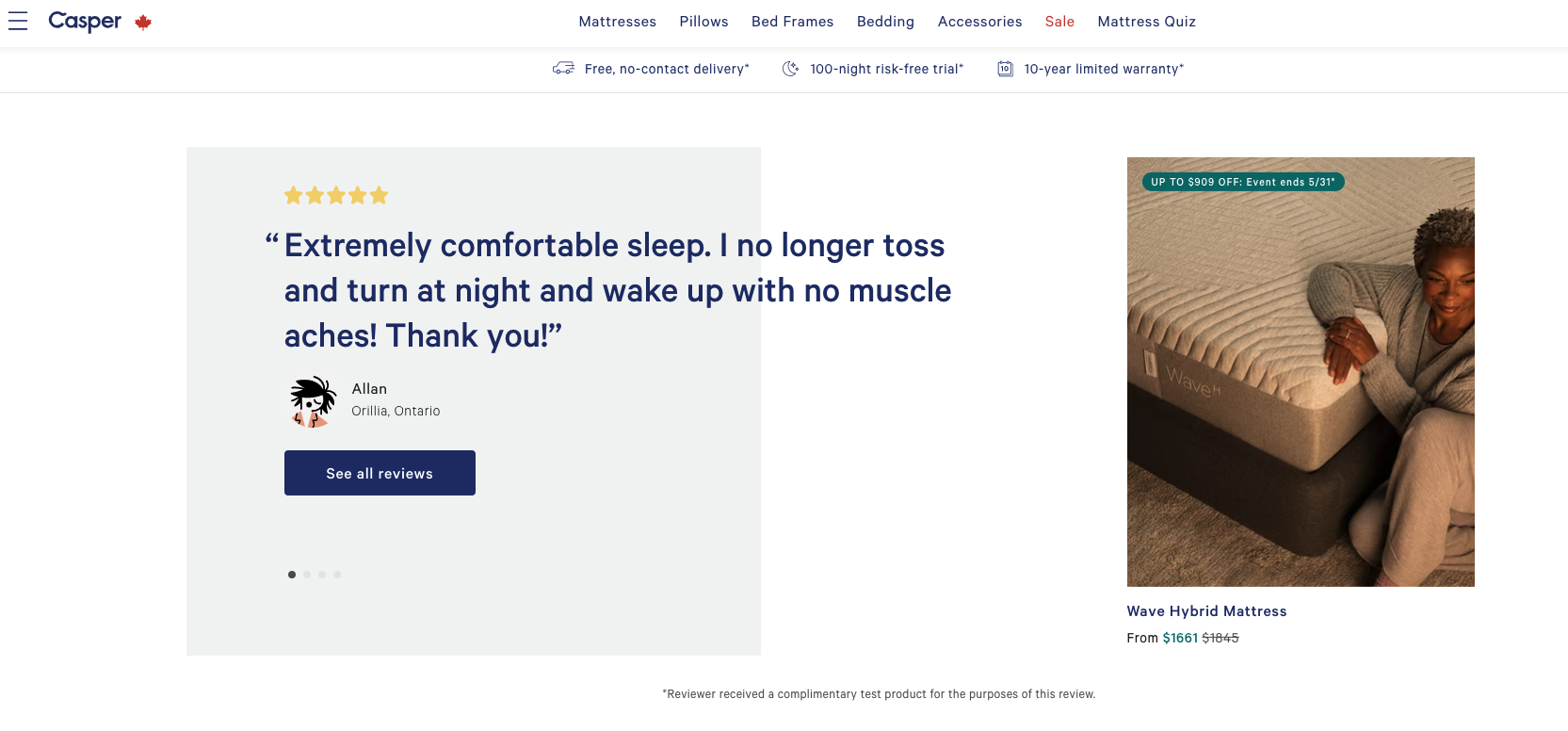Whether you are a startup wanting to go direct-to-consumer or an established business considering the model, understanding what direct-to-consumer marketing is and how it works is essential to your success.
This guide will show you what direct-to-consumer marketing is and how some of the world’s most loved brands operate using this model. In addition to learning from these examples, we’ll also give you some tips on applying the lessons to your own business.
Here are some of the key questions we’ll answer:
- What is direct-to-consumer (DTC)?
- What are the benefits of DTC?
- What are the challenges of DTC?
- How does DTC differ from other business models?
- What are some examples of successful DTC brands?
- What lessons can we learn from successful DTC businesses?
- How can I use DTC marketing to grow my business?
- Is DTC the right model for your business?
Mastering DTC will help you build a relationship with your customers, and understand what they want and how to give it to them.
What is direct-to-consumer (DTC)?
Direct-to-consumer (DTC, sometimes abbreviated as D2C) is a business model in which brands sell their products and services directly to consumers without going through third-party retailers.
DTC allows brands to have complete control over their pricing, product development, and marketing efforts since they are not reliant on retailers to get their products in front of consumers.
Not to be confused with direct marketing, which is a type of marketing strategy used to reach consumers directly, DTC is a business model in which the entire company is organized around selling directly to consumers.
While DTC is not a new concept—brands have been selling directly to consumers through catalogs and TV infomercials for decades—the internet and eCommerce have made it easier than ever for brands to reach and sell to their target audiences without going through retail channels.
The rise of DTC can be attributed to a few key factors:
- The growth of eCommerce: The internet has made it possible for brands to reach a global audience of consumers with just a few clicks.
- The decline of brick-and-mortar retail: In recent years, we’ve seen a decline in brick-and-mortar retail as consumers move online for their shopping needs. This has created an opportunity for DTC brands to fill the void and reach consumers where they are already spending their time.
- The increase in consumer trust: In a world where we can buy anything we want online, consumers have become more trusting of purchasing products from brands they’ve never heard of. Thanks to social media and online reviews, it’s easier than ever for consumers to research brands and make informed purchase decisions.
- The growth of mobile: Mobile devices have made it possible for consumers to shop anywhere, anytime. With the development of mobile commerce, DTC brands can reach consumers at home, at work, or on the go.
What are the benefits of DTC?
For brands, DTC offers several advantages over traditional retail models:
Complete control
DTC brands completely control their product development, pricing, and marketing. This allows them to experiment and iterate quickly to find what works for their customers. For example, if you sell sunglasses, you can experiment with new styles and designs regularly and quickly make changes based on customer feedback.
Better margins
DTC brands don’t have to worry about the high costs associated with traditional retail, such as inventory, shipping, and brick-and-mortar storefronts. This allows them to keep their prices low and offer competitive discounts. Practically, this means that DTC brands can sell their products at a lower price point and still make a profit.
Direct relationship with consumers
DTC brands have a direct relationship with their consumers, which gives them insight into who their customers are, what they want, and how they like to shop. This means that DTC brands can tailor their offerings to meet the specific needs of their target audience.
Improved customer service
DTC brands can offer a higher level of customer service since they are not reliant on third-party retailers. This allows them to build a reputation for quality and create long-lasting relationships with their customers. Doing this has many benefits, such as repeat customers and word-of-mouth marketing.
Own the customer relationship
DTC brands own the customer relationship, which means they can collect data and build a database of customers that they can market to directly. No one knows your customers better than you do; this data is invaluable for targeted marketing efforts.
Increased profits
DTC brands don’t have to share their profits with retailers, so they can keep more of the revenue from each sale. This allows them to reinvest in their business and fuel future growth. For example, they can use these profits to invest in new product development or marketing initiatives.
What are the challenges of DTC?
DTC is not without its challenges. Here are a few to consider:
High customer acquisition costs: Without the help of retailers, DTC brands have to invest heavily in marketing and advertising to reach their target audiences. This can be a challenge for early-stage startups with limited budgets.
High returns: DTC brands often have to deal with high return rates as customers take advantage of free shipping and easy returns. This can be a costly issue for brands, regarding the actual product returns and the impact on customer satisfaction.
Competition: The DTC space is becoming increasingly crowded as more and more brands enter the market. This makes it important for D2C brands to differentiate themselves to stand out from the crowd.
Even with these challenges, DTC is a viable option for brands looking to take control of their destiny and build a direct relationship with their customers.
How does DTC differ from other business models?
DTC brands are organized around selling directly to consumers, which sets them apart from other business models like mass market, brick-and-mortar retail, and wholesale.
In a DTC model, the entire company is focused on creating a direct relationship with the consumer. This means everything from product development and pricing to marketing and customer service is geared towards building a connection with the customer.
In contrast, mass-market brands sell their products through various channels, including brick-and-mortar retailers, online retailers, and wholesalers. These brands typically focus on creating a product that appeals to a wide range of consumers and mass marketing it to reach as many people as possible.
Brick-and-mortar retailers focus on creating a physical space where consumers can shop. These brands typically carry a wide range of products from different brands and work to create a shopping experience that draws customers in.
Finally, wholesale brands sell their products to other businesses, reselling them to consumers. This model is typically used by brands that sell products that require a higher level of expertise, like electronics or appliances.
What are some examples of successful DTC brands?
1. Warby Parker

Warby Parker is a direct-to-consumer eyewear brand that sells prescription glasses and sunglasses online and in physical stores. They are great with marketing, using a mix of traditional and digital marketing tactics to reach their target audience.
Founded in 2010, Warby Parker has been a huge success, growing to become one of the most well-known names in the DTC space. They ended 2021 with over $540-million in revenue.
2. Allbirds

Allbirds is a footwear brand that sells shoes made from sustainable materials. This company shines when it comes to sustainability, both in terms of its product and its business practices.
This company has grown rapidly since it was founded in 2016, and it is now one of the most recognizable names in the sustainable fashion space.
3. Everlane

Everlane is a DTC clothing brand that sells high-quality, stylish clothes at an accessible price point. This has become so successful by focusing on transparency, both in terms of their product and their business.
Everlane has become one of the most well-known names in the DTC space, thanks to its focus on quality and transparency. In 2018, they were valued north of $250 million.
4. Dollar Shave Club

Dollar Shave Club is a shaving brand that delivers razors and other grooming products to customers’ doorsteps. While their products are good, their real success comes from their marketing, which is witty and irreverent.
Most customers first discover Dollar Shave Club through their viral marketing videos, which have been viewed millions of times. In 2016, Unilever acquired Dollar Shave Club for $1 billion.
5. Casper

Casper is a direct-to-consumer mattress brand that sells mattresses, sheets, pillows, and other bedding products online and in physical stores. This company has been successful by investing heavily in marketing and advertising to reach its target audience.
Their audience is primarily people in their 20s and 30s who are looking for affordable, high-quality mattresses.
Each of these examples shows that there is no one formula for success when it comes to DTC brands. The important thing is to focus on creating a product that meets the needs of your target audience and finding a way to reach them effectively.
What are some lessons we can learn from successful DTC brands?
1. Have a clear understanding of your target market
Before launching their business, Warby Parker’s co-founders took the time to understand their target market and what they were looking for in a pair of glasses. This allowed them to create a product that met the needs of their consumers and positioned Warby Parker as a stylish, affordable alternative to traditional eyewear brands.
2. Focus on building a strong brand
Allbirds has focused on building a strong brand identity that resonates with its target market of sustainable-minded consumers. In addition to selling their products directly to consumers, Allbirds also offers a unique customer experience in their physical stores and uses sustainable packaging to differentiate their brand further.
3. Offer a compelling value proposition
Everlane’s success is due in part to its compelling value proposition—high-quality clothes at an accessible price point. By offering consumers a better value than what they would find at traditional retailers, Everlane has been able to build a loyal customer base.
4. Conveniently deliver your product
Dollar Shave Club’s razor subscriptions make it convenient for customers to receive their products on a regular basis. This convenience factor has helped Dollar Shave Club build a loyal customer base and become one of the leading direct-to-consumer shaving brands.
5. Create a seamless omnichannel experience
Casper has built a seamless omnichannel experience for their customers, whether they are shopping online or in one of their physical stores. This focus on providing a consistent customer experience across channels has helped Casper build a strong brand and grow its business.
How can I use DTC marketing to grow my business?
1. Use data to understand your target market
Before launching a direct-to-consumer marketing campaign, it’s important to use data to understand your target market. By understanding who your target consumers are and what they are looking for, you can create a campaign that resonates with them and drives results.
2. Create a strong brand identity
When launching a direct-to-consumer brand, it’s important to focus on creating a strong brand identity. This can be done by developing a unique voice and visual identity that sets your brand apart from the competition.
3. Offer a compelling value proposition
Your direct-to-consumer marketing campaign should offer a compelling value proposition that speaks to the needs of your target market. By offering a product or service that meets the needs of your consumers, you’ll be more likely to drive results with your campaign.
4. Deliver your product in a convenient way
In order to make your direct-to-consumer marketing campaign successful, it’s important to deliver your product in a convenient way. This could mean offering subscription services or shipping your products directly to consumers’ doorsteps.
5. Focus on creating a seamless omnichannel experience
To create a successful direct-to-consumer marketing campaign, it’s important to create a seamless omnichannel experience. This means creating a consistent brand identity and customer experience across all channels, including online and offline.
By following these lessons, you can use DTC marketing to grow your business. However, keep in mind that it takes time and effort to build a successful DTC brand. If you’re patient and focused on creating a great product and customer experience, you’ll be well on your way to success.
So, is DTC the right model for you?
It depends on your business and your goals. If you want complete control over your product, pricing, and marketing, then DTC eCommerce may be the right model. If you’re focused on building a solid brand and creating a seamless customer experience, then DTC could also be a good fit.
Ultimately, it’s important to evaluate your business and your goals to see if DTC is the suitable model for you. Remember, if you go the DTC route, you’ll need to invest heavily in marketing and advertising to reach your target market.
And having the right tools will be critical to your success. By installing AfterShip Marketing, you'll have access to email marketing, sales pop-ups, web push, cart recovery, and all must-have Shopify apps. AfterShip has everything you need to drive traffic, conversions, and revenue.

